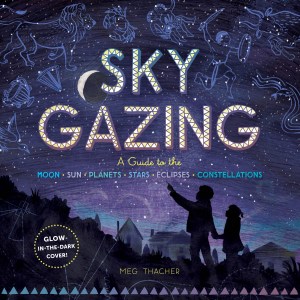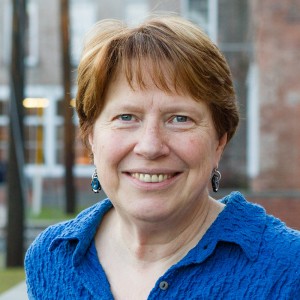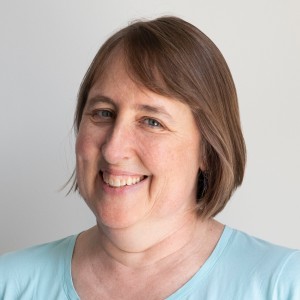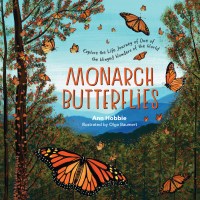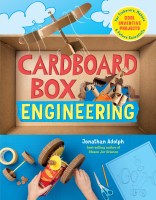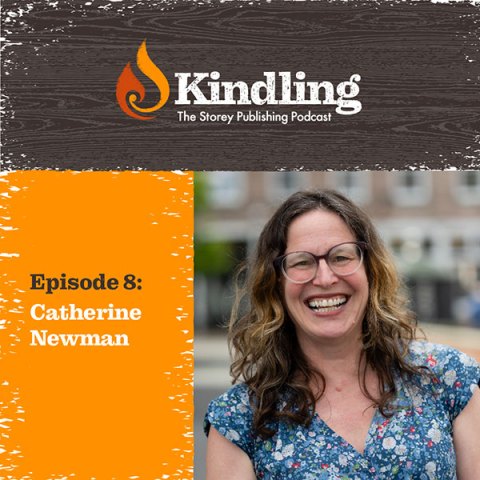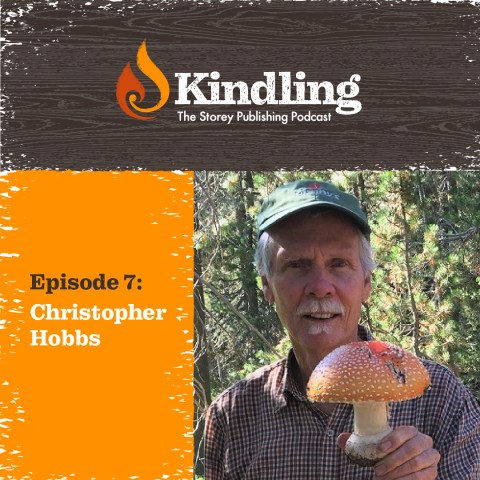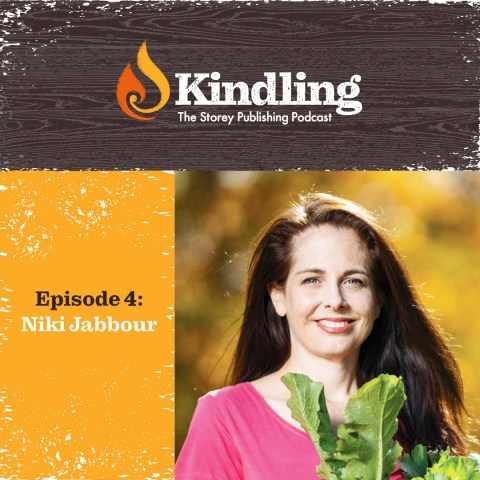Kindling Podcast Episode 9: Meg Thacher
Tune in as Storey’s Acquiring Editor, Deb Burns, speaks with Meg Thacher about her book, Sky Gazing: A Guide to the Moon, Sun, Planets, Stars, Eclipses, and Constellations.
In this episode, Thacher shares her passion for astronomy from how she got started (spoiler alert, an inspiring professor made all the difference!) to what it was like to write her first book, the beautifully illustrated Sky Gazing. She goes on to explain that astronomy acts as a “gateway science” for kids who are fascinated by mysterious black holes and the unimaginable size of the sun.
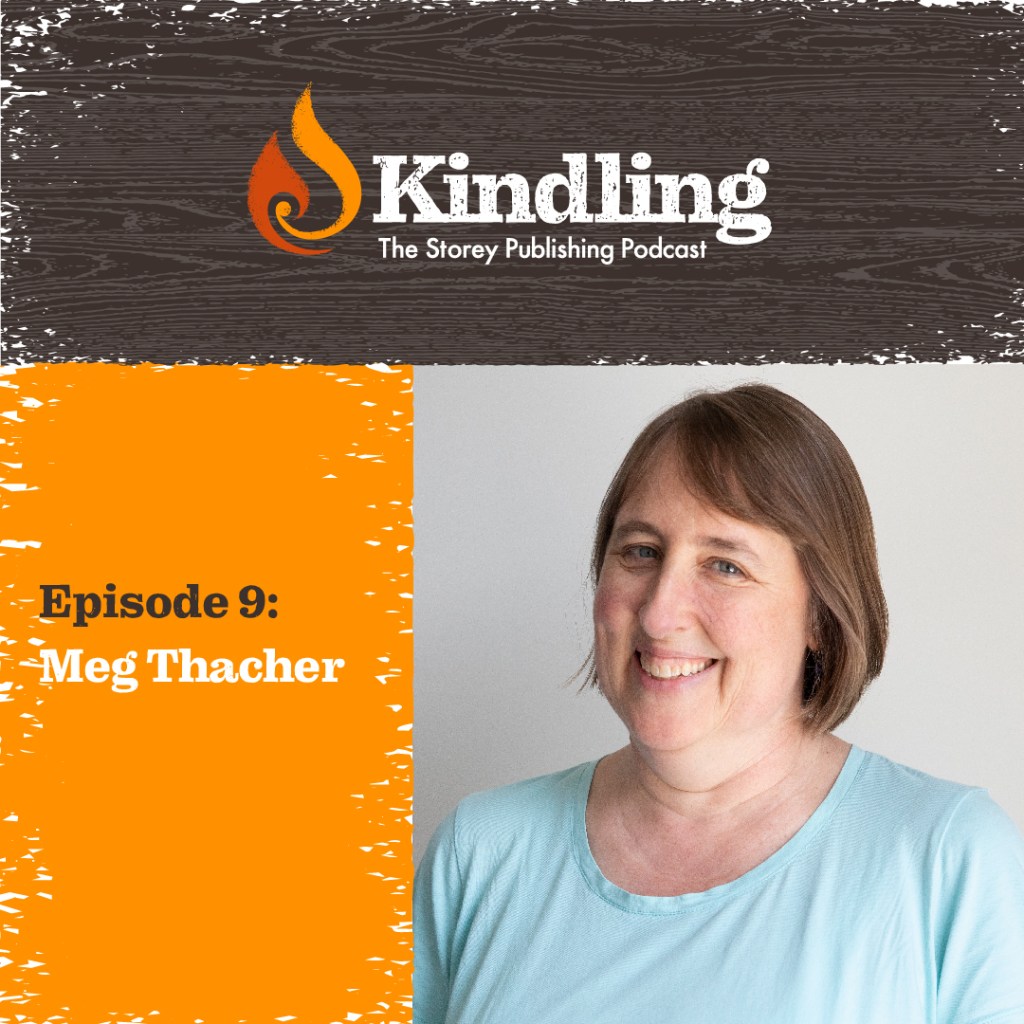
This episode of Kindling: The Storey Publishing Podcast can also be found on podcast platforms including Spotify and iTunes. If you enjoyed this episode please be sure to leave us a rating and review.
Full Podcast Transcript
Deborah Balmuth:
This is Kindling, the story publishing podcast, where we explore the spark that ignites a deep-rooted passion for sustainable living. I’m Deborah Balmuth, Storey’s Publisher. From growing organic food and making herbal remedies to fermenting, weaving, and raising chickens, the authors we’ll meet, will empower you with the skills and savvy they’ve gleaned, from years of hands-on experience.
In each episode of Kindling, you’ll learn what fuels these authors’ excitement and what they love most about creating books that share their expertise and enthusiasm with the world.
Among Meg Thacher’s many goals, is passing the astronomical torch to younger generations. After a long, passionate career of teaching astronomy and publishing articles on the subject, Meg has written Sky Gazing, a stunning, visual guide to help children observe the skies. Storey’s Acquiring Editor, Deb Burns, recently spoke with Meg Thacher, who claims that most of her astronomy colleagues committed to the field at a very young age. But as Meg explains, her commitment to studying the cosmos came later than most.
Meg Thacher:
Everyone I know who is an astronomer decided they wanted to be an astronomer when they were about eight years old, except for me. All of my friends watched Cosmos or something like that, and they really got into the stars and space and the night sky. And I thought that was all very nice, but it wasn’t something that I thought you could make a living doing. So, it was really not until I went to college, that I realized that I wanted to be an astronomer.
And that was when I took a physics course my first year in college. And I just loved physics. It was wonderful. I decided to major in it. And then the following year, we hired a new astronomy professor named Joel Weisberg. And I took a few courses from him and it was fantastic, and then I became his teaching assistant and I decided I wanted to go into astronomy and education. And that’s when it happened for me.
Deb Burns:
And was there a particular moment?
Meg Thacher:
Not really, it was a whole bunch of little moments that added up, although my two most memorable moments in astronomy at college were looking at Halley’s Comet. It came around in, oh goodness, I hope I get this right, 1986. I went to school in Minnesota, at Carleton College, so we were showing Halley’s comet in January in Minnesota. I will never forget that experience, ever. And then the second most memorable, was during parents weekend. My mom came out and visited and we were doing an open house, observing with all of the telescopes for all of the parents. And they all came and watched. And then my mother went back to my dorm room. And of course, the minute she left, we had this brilliant northern lights display. So, I waited five minutes and I called her and I said, “Mom, go back outside and look at the northern lights.” And she said, “It’s okay. I turned around and looked at them. I saw them when I was going home.” So it was an amazing northern lights display.
Deb Burns:
Oh yes. How great and in Minnesota, I can’t imagine a better place to observe them. So, you’re saying that kids, they’re in elementary school when they sort of connect with the stars as something thrilling to them?
Meg Thacher:
Yes. In fact, I often call astronomy a gateway science. So, it’s a science that kids are really fascinated with. They love space, because there’s all kinds of stuff that’s really big and really far away and really weird, like black holes. And they love to learn these statistics about how big the sun is, and how far away the nearest star is, and how large the galaxy is. And what would happen to you if you got too close to a black hole. So it’s this really fun, fascinating stuff that gets children interested in science at a really early age.
Deb Burns:
Yes, indeed. I grew up in the country and the sky was dark and deep and clear, but I never particularly looked at it. Whereas, my husband grew up in the city, and he fell in love with the sky and he would sit on the rooftop in New York City. And so I think that your book gives kids and families and adults the encouragement that they can see lots of stuff, even in the city, at night.
Meg Thacher:
We didn’t want this to be a book for people who live far away from all city lights and can see lots and lots of stuff. There is plenty of astronomy that you can do without being able to see every single star in the sky. You’ve got the sun and the moon and the planets and all the bright stars. Most people, even in the middle of New York City, can see Orion and can see the big Dipper. I was very surprised. I had a student who came from the Bronx and she said, “Oh yeah, I look at the Big Dipper out my window every night.” And I was thinking, “But if you’re in the city, you can’t see anything.” And that’s just not true. You can see a lot.
Deb Burns:
You have various ways that you suggest in the book, where you can use the stars or the constellations as a signpost. You have as page devoted to the Big Dipper as a starry signpost, that would show readers how to find other things from the Big Dipper, not just the North Star, which we’re more familiar with, but what else can you find using the Big Dipper?
Meg Thacher:
Well, so the Big Dipper points at the North Star, if you use the two stars on the far end of the bowl of the dipper, and you can use those to point at the North Star, you can also use the handle to make an arc. Follow the arc to Arcturus there, which is in the constellation of Boötes, the herdsman. And there are a bunch of constellations around there that you can find once you know where Boötes is. You can find all the spring constellations and you can keep going in that same arc, and speed on to Spica, which is the brightest, and in fact, the only star that I can ever find in the constellation of Virgo.
This is something that astronomers do all the time. And this is a really great way to learn constellations, is if you know one, if you can find the Big Dipper, you can look at a star map and you can see what’s around the Big Dipper. And how can you use parts of the Big Dipper to point at different constellations. So, it’s really using what you do know to find out what you don’t know. Pattern recognition comes very easily to humans. It’s something that we do very well, but it does take practice.
Deb Burns:
But you mean pattern recognition, making a person out of it, or a horse, or whatever out of the stars you see in the sky? Putting it together.
Meg Thacher:
Right, and once you make that horse out of the stars, it’s easier to see the second time that you go looking for it. And that’s also why people invented the constellations in the first place, so that they could remember. And you’ll see that a lot of the star stories have to do with how the stars move through the sky, or what time of year they’re visible.
Deb Burns:
So the star stories, you’ve pulled myths from different lands. So we’re used to seeing the Greek version of the constellations. And so what we might see as Orion, or others are parts of great mythological stories, Cassiopeia and Perseus. But there are other completely different interpretations and stories created out of the same stars, but using them in different ways, in different patterns. So, could you talk a little bit about, I think you have five different cultures whose star stories you have shared in this book.
Meg Thacher:
Right, so I used a story from Southern Africa to talk about Orion, and that whole group of constellations. A Polynesian myth Maui’s fish hook, which of course now everyone knows about, because of Moana. So, the constellation of Scorpius, the Greek saw this big question mark shape in the sky as the tail of a scorpion, but the Polynesian peoples, who live on the equator, they see it much higher up in their sky and at a slightly different angle, and to them, it looks like a fish hook. And so that’s the mythological fish hook that Maui used to bring all the islands up from the bottom of the ocean, and created land for people to live on.
Deb Burns:
And in similar ways, the moon is seen differently, to have different patterns on it as well in different cultures. And there’s mythology associated with that, as well.
Meg Thacher:
Yes. And one of the things that I had a lot of fun with in doing this book, was thinking of activities that kids could do and they could do with their families. And one of them is just taking a blank moon and trying to connect up all of those different craters and see what shapes they think they make. Because in the United States, we see the man in the moon and other cultures will see a rabbit, or two hands, or a tree, and you can do the same thing with the constellation. You can just take a blank map that doesn’t have the dots connected that just shows the stars, and you can make up your own pictures out of those stars, and you can make up your own stories about them. And just get an idea of why our ancestors did that.
Deb Burns:
You have a recurring feature where the reader keeps a notebook and keeps writing the observations and the changes. And also your activities are things that a kid could invite their best friend to do with. So you have a lot of activities that could either be done alone, or could definitely be in a group?
Meg Thacher:
Yes.
Deb Burns:
You have made the book accessible to readers all over the world, readers who are in the Southern hemisphere as well. And you’ve been very careful to include their perspective and the way they would see things. That’s a really wonderful feature of the book. Why have it just be the Northern hemisphere? We live on this one planet, so you made it possible for people all over to use the book to see the heavens more clearly.
Meg Thacher:
Right, well, I’m hoping that it’s also interesting to people in the Northern Hemisphere to realize that things look different in the Southern Hemisphere, and vice versa.
Deb Burns:
It makes you realize how big the earth is. And yet it’s so small in the big scheme of things. So, one of the really wonderful features of the book also, seem to be, there are quite a few, is how the earth, the sun, the planets and stars in general formed. You make it make sense, and you understand that all these stars and planets that we see in the sky, are just at one particular point in their own evolution. That they’re still changing, even in a universal pace.
Meg Thacher:
What’s really is that all of these processes take millions and billions of years. Our sun has been around for 5 billion years, but how do we know that? And one of the ways we know that is through geology. We look at the earth and we figure out the earth is four and a half billion years old, so the sun has to be older than that. Astronomy is a strange science, because astronomers can’t really do experiments. They can’t drive out to the nearest star and say, “Hmm, I wonder what will happen if I double this stars mass, and then get a stars worth of hydrogen and add it to that star, and wait to see what happens.”
First of all, you really just can’t do that, any of that. Second of all, if you did that, it would still take a million years for the effect to be seen, most likely. So, it’s a strange science. We know everything that we know about astronomy, just by sitting here on earth and letting the light of the universe come to us.
Deb Burns:
Well, that’s a wonderful note to end on, I think. There’s always so many more questions that come bubbling up, but are there any things you’d like to add things that you want to have included in this conversation?
Meg Thacher:
We’ve talked mostly about astronomy, and for me, I knew all the astronomy before I did the… Well, not all of it. I actually had a lot of fun doing some research and finding out some stuff that I didn’t know. But for me, what was really exciting about this book was writing a book. I had never written a book before, so it was really fun for me. I didn’t really know what the process was. And it took me 14 months to write all the words that were in this book. I finished writing, and then I went and I revised, and I made sure every word was absolutely perfect. And then I sent it into you and it came back to me with all of these comments on it. I thought, “Wait, I thought I was finished.” I really didn’t know what the process of making a book was, and how many people are involved in it.
I had you and we had a copy editor, and then we had the book designer, and we had the illustrator, just everybody turning my words into this incredible thing. Astronomy obviously is a very visual science, but also the concepts in astronomy that we talked about, like how the stars and planets and sun move in the sky, and how the solar system was formed. All of these required some really detailed diagrams. And just words alone are not going to really have the same impact of the words, plus the pictures. So, that to me was the most fun about creating this book.
Deborah Balmuth:
Meg Thacher is the author of Sky Gazing. She spoke with Storey’s Acquiring Editor, Deb Burns.
To learn more about Storey Publishing’s books and authors, visit storey.com. That’s S-T-O-R-E-Y.com. And if you have questions or comments about what you hear on Kindling, let us know. You can email us at feedback@storey.com. That’s it for this edition of Kindling, coming to you from the Berkshire Hills of Western Massachusetts. I’m Storey’s Publisher, Deborah Balmuth. Thanks for listening.
Next time on Kindling.
Kristi Nelson:
You’ll be looking for the thing that you have in your mind as to what you’re going for, and you’ll walk right past the things that are really meant to be yours, that can shock you in the most delightful ways. And knowing that we also make room for what’s difficult.
Deborah Balmuth:
Kristi Nelson author of Wake Up Grateful: The Transformative Practice of Taking Nothing for Granted, helps us recognize abundance in every moment, no matter how challenging.
KINDLING IS PRODUCED BY SHEIR AND SHIM, LLC.
Learn More
This captivating book offers a tour of our solar system and deep space, explaining how objects like Earth’s moon were formed and introducing the “why” behind phenomena such as eclipses, northern lights, and meteor showers. Sky gazers will learn how to find and observe planets—no binoculars or telescopes required—and star charts will show them how to spot constellations through the seasons and in both hemispheres.
Activities include tracking the cycles of the sun and moon and observing the sky during daylight hours or on a cloudy night. Includes profiles of professional astronomers and sidebars on space technology and current issues, such as light pollution.
